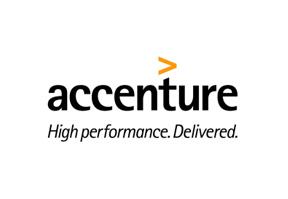The Industrial Internet of Things represents a tremendous opportunity for innovative companies looking to unlock new revenue sources by packaging their products with new digital services, says Accenture in its new report, “Driving Unconventional Growth through the Industrial Internet of Things.”
Combining sensor-driven computing, industrial analytics and intelligent machine applications into a single universe of connected intelligent industrial products, processes and services, the Industrial Internet of Things generates data essential for developing corporate operational efficiency strategies. However, the Accenture report finds that the Industrial Internet of Things also provides a rich opportunity to drive revenue growth through new, innovative and augmented services for a rapidly expanding marketplace.
The potential payoff is enormous. Third party sources predict that global investment in the Industrial Internet of Things is predicted to reach $500 billion by 2020: a 2,400 percent increase from the $20 billion spent in 2012. Companies that introduce automation and more flexible production techniques to manufacturing can boost productivity by as much as 30 percent, and predictive maintenance of assets can save companies up to 12 percent over scheduled repairs, can reduce overall maintenance costs by up to 30 percent and can eliminate breakdowns by 70 percent.
“Industrial companies have long supplemented their product revenues with services,” said Paul Daugherty, chief technology officer, Accenture. “But innovators, companies that understand that every business is a digital business, are using this technology to create product-service hybrids that provide new growth opportunities and pave the way for pioneering the next generation of industrial products.”
According to the report, innovative industrial companies can capture growth in three ways. They can:
- Boost revenues by increasing production and creating new hybrid business models
- Fuel breakthrough innovations through intelligent technologies
- Transform the workforce to cultivate the new skills required for Industrial Internet of Things jobs
Boost revenues and production and create hybrid business models
Companies are already spending heavily on digital services to help increase production and efficiency. Accenture’s report explains that many of these same companies are also investing in their own solutions to improve the performance of existing assets and processes that stretch across the entire supply chain. These product-service hybrids, by connecting intelligent physical assets capable of producing data for use in digital services, have the ability to combine product sales and leasing with recurring income streams from digital services. These services also enable firms in industries such as resource-extraction (such as mining or oil companies) and process industries (such as food or chemical manufacturers) to make better decisions, enjoy better visibility along the value chain and improve productivity.
Fuel innovation through intelligent technologies
Manufacturers soon will be building intelligence into every machine they produce and the innovative applications that accompany these smart machines will be vehicles for driving new revenue streams out of product-service hybrids. To reap the full benefits of the Industrial Internet of Things, says Accenture’s report, companies must exploit sensor-driven computing, industrial analytics and intelligent machine applications and weave together enterprise and machine-generated data to create new monetisation opportunities.
Transform the workforce to cultivate new skills and talent
The Industrial Internet of Things will open up new workforce needs as it simultaneously creates redundancy in others. It will digitise certain tasks and workflow, especially repetitive jobs that, up until now, have resisted automation. Accenture’s report forecasts that to efficiently capture these burgeoning opportunities, companies will need to look for skills in data science, software development, hardware engineering, testing, operations, marketing and sales. And they will need to expand their talent base to handle the creation of new service sectors that support these diverse users of industrial products and services while mastering new ways of working.
“Business customers will always need products and services that create more value for them,” said Daugherty. “For example, Michelin Group is using sensors inside tires that, combined with analytics, can coach truck fleet drivers on how to save fuel. Daimler AG, the carmaker, has created a rental service called Car2Go that forgoes the typical centralised rental office in favor of a downloadable smartphone app that allows users to access cars directly wherever they are parked. For those companies looking to build a more innovative mousetrap – a new product-service hybrid that will completely revolutionise their company or industry – now is the time to harness the emerging Industrial Internet of Things to identify new growth opportunities and, with the right vision and leadership, turn them into reality.”










